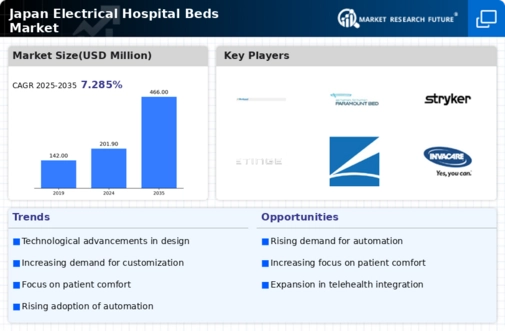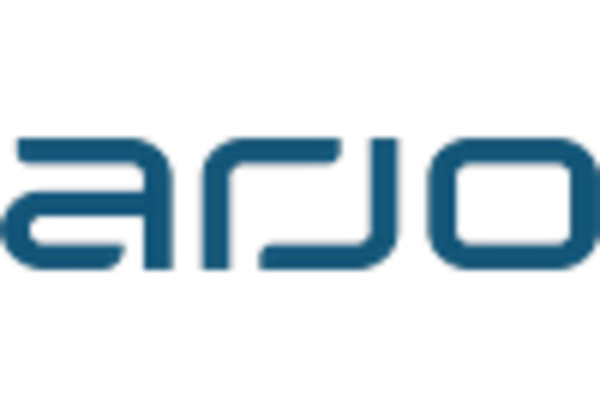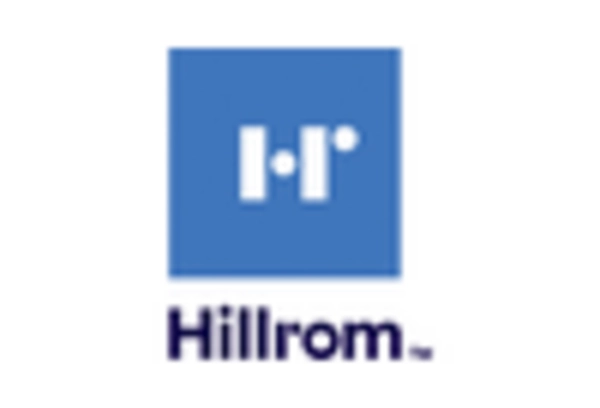Government Initiatives and Funding
Government initiatives aimed at improving healthcare infrastructure significantly impact the electrical hospital-beds market. In Japan, the government has been actively investing in healthcare facilities to enhance service delivery and patient outcomes. Recent policies have allocated substantial funding for upgrading medical equipment, including hospital beds. This financial support encourages hospitals to adopt advanced electrical hospital beds that offer better functionality and patient comfort. Furthermore, the government's focus on improving healthcare accessibility for all citizens is likely to drive demand for these beds in both public and private healthcare settings. As a result, the electrical hospital-beds market is expected to benefit from increased government spending and initiatives aimed at modernizing healthcare facilities.
Aging Population and Healthcare Demand
The aging population in Japan is a critical driver for the electrical hospital-beds market. As the demographic shifts towards an older age group, the demand for healthcare services, including hospital beds, is expected to rise significantly. By 2025, it is projected that over 30% of the population will be aged 65 and above, leading to an increased need for specialized medical equipment. This demographic trend necessitates the provision of comfortable and adjustable hospital beds that cater to the unique needs of elderly patients. Consequently, healthcare facilities are likely to invest more in electrical hospital beds to enhance patient care and improve operational efficiency. The electrical hospital-beds market is poised for growth due to the urgent need to accommodate a growing elderly population that requires medical attention.
Increased Prevalence of Chronic Diseases
The rising prevalence of chronic diseases in Japan is a crucial factor influencing the electrical hospital-beds market. Conditions such as diabetes, cardiovascular diseases, and respiratory disorders require ongoing medical attention and often necessitate hospitalization. As the population ages and lifestyle-related health issues become more common, the demand for hospital beds, particularly electrical ones, is expected to increase. Hospitals are likely to require more specialized beds that can accommodate patients with specific medical needs, thereby driving growth in the electrical hospital-beds market. This trend indicates a shift towards more sophisticated medical equipment that can support the management of chronic conditions effectively.
Rising Awareness of Patient Comfort and Safety
The growing awareness of patient comfort and safety is a significant driver for the electrical hospital-beds market. Healthcare providers in Japan are increasingly recognizing the importance of creating a conducive healing environment for patients. Electrical hospital beds, with their adjustable features and enhanced safety mechanisms, are becoming essential in achieving this goal. Studies indicate that comfortable beds can lead to shorter hospital stays and improved recovery rates. As hospitals strive to enhance patient satisfaction and outcomes, the demand for high-quality electrical hospital beds is likely to rise. This trend suggests that the electrical hospital-beds market will continue to expand as healthcare facilities prioritize investments in equipment that promotes patient well-being.
Technological Advancements in Medical Equipment
Technological advancements play a pivotal role in shaping the electrical hospital-beds market. Innovations such as integrated monitoring systems, adjustable height features, and advanced mobility options are becoming increasingly prevalent. These enhancements not only improve patient comfort but also facilitate better healthcare delivery. For instance, the integration of smart technology allows for real-time monitoring of patient vitals, which is crucial in hospital settings. The market for electrical hospital beds in Japan is expected to witness a compound annual growth rate (CAGR) of approximately 7% over the next few years, driven by these technological improvements. Hospitals are likely to prioritize investments in modern electrical hospital beds to stay competitive and meet the evolving demands of patient care.

















Leave a Comment